Everyday Magic
I sort of fell off a cliff after that last post. Or, more truthfully, I began pacing back and forth at the edge of a cliff, taking measurements, biting my nails and making guesses about what will happen if I jump, trying to decide if I need more courage or more common sense–all the usual push-pull that happens when I’m thinking about a new project but not quite committed yet. It’s an absorbing, nerve-wracking process. I forget things. I lose time. I lost a whole day this week. It was only when my husband showed no signs of leaving for work that I realized, to my dismay, that it was Saturday, not Friday. And since I’m thinking all the time about something I can’t talk about yet, I have a tendency to get quiet.
But I can say this: among the many, many things that no one told me about writing is that every time you stretch toward a new beginning you have to change a little–sometimes a lot. You have to become the person who can do the work. You write the story, but it writes you, too. If that sounds spooky and a little magical, well, it is. But it’s an everyday kind of magic, like planting a garden, cooking a meal, or collecting stones and shells from a beach.
You never know what kind of spell you might be weaving, though. Some of the stones and shells in picture above come from a beach where I sat and read through the early chapters of Coming to My Senses, judging, revising, imagining what would come next. I almost didn’t go. I thought I should be at home, tethered to my desk, until the book was done. But I couldn’t resist the luxury of a whole weekend of uninterrupted talk with the person who invited me. So I went and worked and talked and cooked and ate and gathered up the shells and stones.
That beach is gone now. It was swallowed up by the ocean when Sandy came ashore.
I’ve been thinking about the kind of everyday and not so everyday magic that springs from accident and loss, memory and meaning. I have little collections like these all over my office. I don’t set out to make them, they just accumulate as things come to me. Once they’ve found a home, though, I’m loathe to disturb them. It’s not that I’m superstitious. Not exactly. It’s just that they take on their own kind of integrity.
Some of the objects scattered around are supposed to be magical: tarot cards, semi-precious stones, a small statue of a god. But mostly, their magic comes from proximity and unexpected combinations. They’re psychic signposts, marking out the boundaries of my personal history, lived and imagined.
Some of them aren’t objects at all, just regular visitors. I suppose you could call them familiars.
Several years before I had the nerve to call myself a writer, I visited a Famous Author. Her home was so intensely personal, so crammed full of color and art and objects, that it was like walking into one of her books–or the mind that had created those books. I was so absorbed in her visual world, so struck by how fully she had let herself expand into the space, that I had trouble paying attention to the conversation. On the drive home I promised myself that some day I would have, if not a whole house, at least one room where I gave myself the same kind of permission.
When we moved into this house I got my chance. But it took me forever. I was overwhelmed by choice–paint color, shelves, blank walls and floor. I just didn’t seem to have enough personality to fill up a room. It was nearly a year before I was fully set up and working properly. But once I was, things began to appear. Postcards, perfume bottles, strange fragrant fruit.
Then a friend came to stay with us. I cleaned my office, set up a temporary bed, looked around a final time to make sure everything was ready, and realized with a blush just how much my friend would know about me after spending the night there. I had the urge to take things down from the walls, disassemble the collections and put them away in a drawer. But I couldn’t. There were too many and my friend was on the way. The collecting was one kind of magic. Inviting others into the space I had created was another kind altogether–a leap of faith.
So while I’m pacing back and forth by my cliff I thought I’d share a few pieces of it with you, too. Because I’m wondering what kind of everyday magic you practice in your own lives. What are the objects and private rituals that protect and inspire you? That help you to imagine that something more, or hold on to a small piece of what has vanished?
Images: Rider Waite Tarot Card and my own photos.


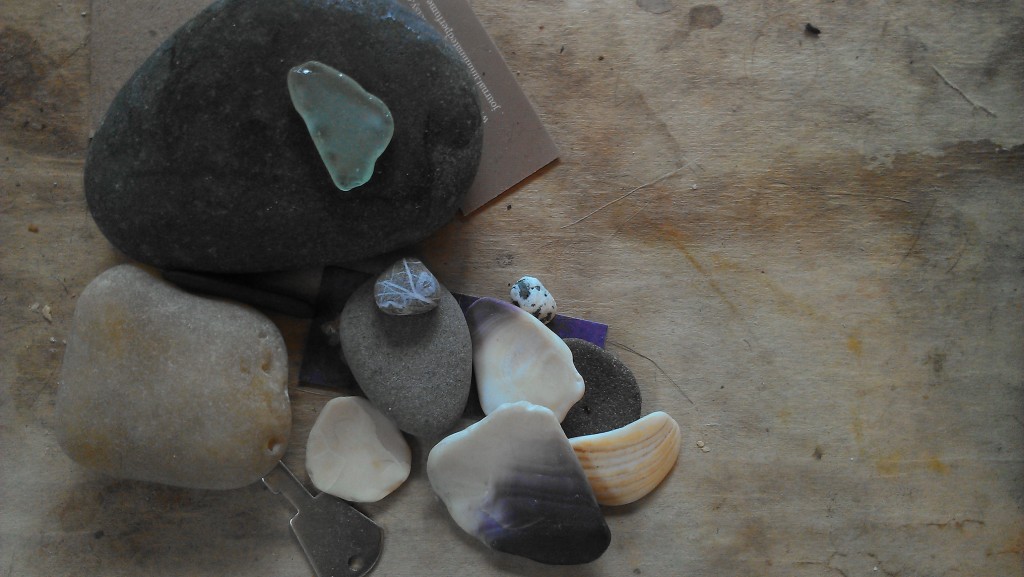

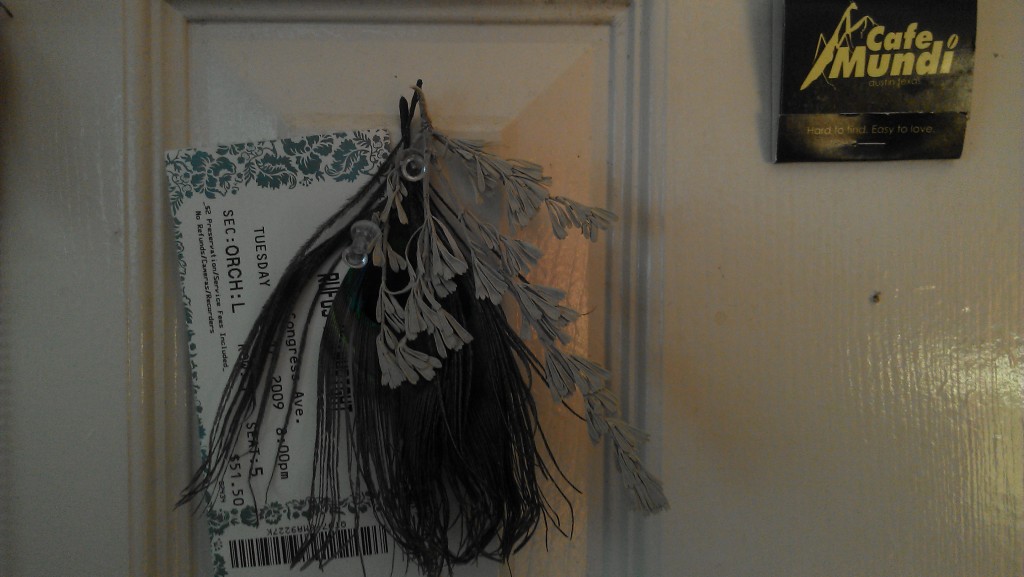
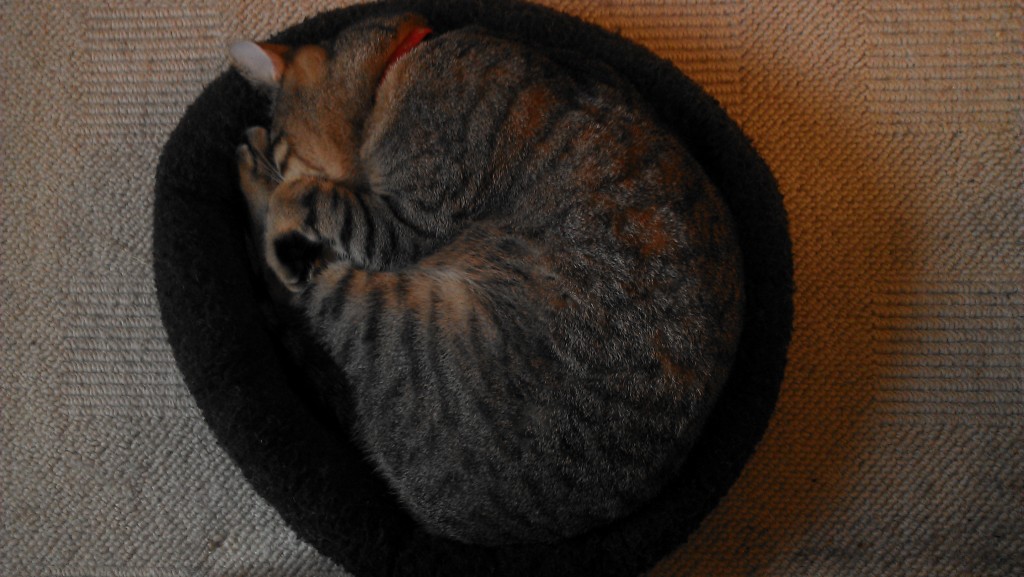
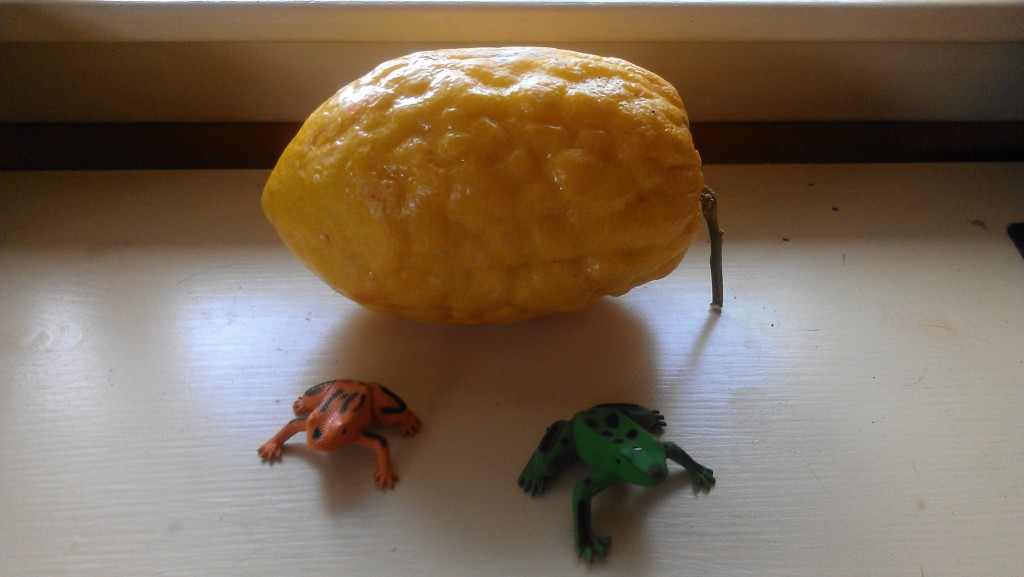


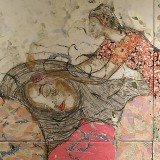

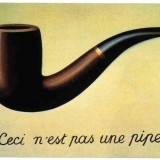


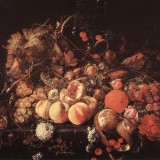


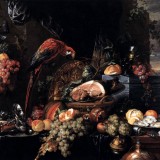






12/09/2012 at 4:03 pm
What a wonderful meditation on — what?– expression, I guess. I love what you say about the writing process, and I think I understand the connection you’re suggesting here between what’s before the eyes and what goes on behind them.
Anyone who spent a night in my house would also know a lot about me. (That is to say, a lot about me beyond my lack of talent as a housekeeper.) I’ve shed several skins in my life, so a lot of what’s here is more relic than expression, but still it all adds up to me. Every piece of art has a story, and I have an old 50s style china cabinet where Wedgwood and Meissen sit next to tiny Haitian paintings, postcards, and an actual shed snakeskin.
12/09/2012 at 6:10 pm
I would like very much to visit your house and read those objects–as Marianne suggests. And yes, what is it exactly I’m talking about here? Conjuring, I think. The way energy collects. Different definitions of magic… But yes, definitely, about inner and outer vision, too.
12/09/2012 at 4:43 pm
Yes, I too have spaces that I nurture and they nurture me.
I have an area outside my dining area window where I have several bird feeders, bird baths and bird houses. They come in droves at times and individually at others.
I love to watch them.
Inside there are spaces that start small usually..a leaf, a shell, a cut out piece of prose, a picture, whatever. It creates itself but like you said, when I go back to it and “read” the space it says a lot about me and how I truly feel.
It’s good.
12/09/2012 at 6:06 pm
Yes, that’s it exactly, Marianne. It starts with one object and then others come along to sit beside it, and before you know it there’s a vignette, or an ofrenda, or whatever you want to call one of those little collections. I like very much what you say about “reading” the space–it helps me understand the connection mine have to writing. The objects are a kind of language, aren’t they?
12/09/2012 at 6:06 pm
Our porch and yard/clearing (we live in the woods) sport a variety of hog skulls, cow pelvises, and assorted bones. Not that we have killed any of them, we haven’t, but I just can’t leave a nice skull to go to waste on the side of the road when it can be decorating our living space. I suppose it looks almost Baba Yaga-ish. I shared the miracle of owl feathers with my husband, and now he saves every feather he finds & sticks them in assorted cracks around the house. Good thing we don’t live in one of those fancy subdivisions in town.
12/09/2012 at 6:22 pm
I love the image of all those bones! I can completely understand your attraction to them. And surely they help mark the boundaries of your space. Probably do a good job of sorting out the bold from the fussy, too, when it comes to visitors. And the fact that your husband got right on board with the owl feathers says a lot about the two of you.
12/09/2012 at 6:43 pm
What do the objects we surround ourselves with tell others about us? What do they conjure for us? What a wonderful question and how beautifully you have written about it. I share my space with feathered, finned and scaled creatures. There are strange succulents, orchids, and trees from lands far and wide. There are books, beads, rocks, carpets. Within an oaken dresser are bottles containing my scented armor. The choice and application is a meditation and ritual. The whole house is a Cabinet of Curiousities!
12/09/2012 at 7:18 pm
What a lovely catalog, Katy. And I love the way these comments are helping me understand my own post–I think you’ve phrased the questions much more clearly than I did! “The choice and application is a meditation and ritual.” Yes, yes, exactly.
12/09/2012 at 7:44 pm
Alyssa,
Thank you for helping me look at things in a different way. For many years, I’ve looked around my personal space and felt I really should redecorate. Wouldn’t it be wonderful to live in something as beautiful and polished as those environments shown in the design magazines? (Not that I’d have the finances to accomplish something like that, but perhaps I should make the effort.) But now I realize that those spaces, while definitely beautiful, often lack a link to the owner’s personality. What do we learn about the inhabitants from those spaces? Often, not much.
Several years ago I moved into a new apartment and had a friend help with the final move. She commented on some of the “eclectic” collections I had and said she just loved to see those in people’s homes. I thought she was just being kind at the time as my new space was definitely lacking in furnishings and polish. However, I now realize that maybe she saw these pieces as a way to know people better. And if that’s the case, then these “collections” offer a much deeper connection than a stylized space ever could – not just between the items and their collector but between everyone who enters the space.
Thanks so much for a different perspective and helping me appreciate what I already have (including, maybe, just a little bit of magic)!
12/09/2012 at 10:06 pm
What a wonderful story, Kandice. You know, one of my favorite books, “A Pattern Language,” was written by a group of architects who were fed up with the idea that design should be handed down to people from above. For ten years they observed the way people lived and worked in their homes and communities and tried to isolate patterns that facilitated happiness. The book is a compendium of these patterns, from the very large to the very small, things like “windows with deep reveals,” or “secret places for children to be alone within the group.” One of the most moving passages is the pattern called “personal collections,” in which they talk about just exactly the difference you’ve outlined above–the polished, designed space versus the emotionally meaningful assembly of objects. I can’t find the book to quote right now but I remember them talking about the bottle collection lining a bar, all of them lovingly polished, the layers of political broadsheets papering the inside of a hot dog stand run by a former Socialist radical, and a beautiful collection of walking canes given to a teacher beloved by his students…
12/10/2012 at 2:30 pm
That sounds like a wonderful book – I’ll have to look for it!
12/10/2012 at 7:36 pm
I asked my husband to bring out copy home from his workplace so I can look up the quote!
12/09/2012 at 9:07 pm
Thanks for the great post, Alyssa. How well I know that feeling of pacing along the edge of the cliff. Just hoping I can always be enough of the fool to jump off.
12/09/2012 at 9:58 pm
So great to see you over here, Leslie. And to know I’m not alone in my pacing. Yeesh. I keep reminding myself that the tarot Fool fares very well with his faith and optimism… Goodness knows if we don’t it’s easy enough to find another cliff. Or something like that.
12/09/2012 at 10:05 pm
So happy to hear we will get another “something” from you! I kept checking the blog thinking I had missed a post, so it was also a relief to know all is well with you & V.
My collections and magic right now are a bit like Aunt Clara’s from the TV show Bewitched. I get centered daily by breathing in the fragrance of a candle that smells like my wedding flowers (gardenia), a candle that smells like a rose garden in summer and the samples from Surrender to Chance. Those vintage samples take me back in time even farther, and it is relaxing.
12/09/2012 at 10:13 pm
Thanks so much for your patience, Carol Anne. I’m glad you kept checking. Those candles sound lovely–and what a fragrant wedding you must have had! What is your favorite vintage perfume right now?
12/10/2012 at 7:03 pm
My little collections were disturbed when we relocated last year. In most cases the special objects have not yet found their new homes, crammed as my husband and I are into a much smaller space. And the spaces I do have for myself tend to accumulate tangential clutter (I’m eying my vanity, which is currently piled high with to-be-completed holiday cards and brown paper bags filled with stocking stuffers for my nieces and nephews). I didn’t realize how out of sorts this has made me until I started formulating a response to your post. I really must make an effort to create and maintain spaces for myself and these “magic” items.
12/10/2012 at 7:36 pm
Oh, I wish you luck in finding those spaces and settling in to your new home as a whole. Maybe go vertical? It’s amazing what one set of shelves or a few nails can accomplish once (if you’re me) you get over the idea that everything has to be planned in advance.
12/16/2012 at 3:40 am
My mother was a hoarder. Not reality TV worthy, but a hoarder. Like many hoarders, she held most aspects of normal housekeeping and homemaking in contempt–people who kept a conventional home were people who had nothing better to do and no talent to do it with.
This means that for me there’s a pleasure, and a sense of rebellion, about the most ordinary acts of tending a home. Deciding that the tea belongs in *that* canister, which belongs in *that* place, is a reflection of the fact that I now have the power to make that decision. Getting out the canister, pulling out a teabag, and most especially *putting the canister away* afterwards (“Why are you putting that away? You’re just going to need it again!” “Shush, Mom. This is my house. Get out of my head.”) is a delight of rebellion.
There is a feeling of magic, combative magic, about it. Just today, I cleaned the expired medicine out of the medicine cabinet and organized bath oil and perfumed lotion into planned and considered places on its shelves. These things couldn’t be more prosaic, but they feel to me the way that I suspect a cleansing ritual like a smudge stick feels to others. To order, and tend, and love, my home, feels as if it’s expelling childhood demons.
12/18/2012 at 6:23 pm
Thanks so much for this comment, Martha. The line between collecting and hoarding comes up a lot in the perfumista world, mostly as a slightly nervous joke. I’m so glad you’ve found your own borders, and I totally agree about the magic of ordering things. In our house we call those “moralizing” actions. Even the smallest ones–sweeping, taking the trash out, making the bed–seem to calm and energize.
06/16/2013 at 10:22 am
Well, Good Morning! I chanced across your link to the charming Evening Will Come piece by Noy Holland, decided to try a Storify experiment (my first) with the theme, “Everyday Magic,” searched and refound you and this post. A full circle of Everyday Magic. I made a list this week of things to praise and that was one of them, the sparkiness of (paganish) altars: cairns, collections of stones, shells, twigs, a mindful arrangement of flowers. Concrete ways to have faith in the moment. To make a literal monument of a moment. Glad I read this today.
06/16/2013 at 9:28 pm
Thank you, Laura, I’m so glad you stopped by. Yes, I was very excited to see Karen Bernheimer mention “Everyday Magic” as one of the tenet of “The Fairy Way” of reading and writing, since I wrote that piece while trying to think about exactly that–how to write about magic, and what kind of magic that might be, and what kind showed up in my own everyday life.
I don’t know anything about Storify–one more internet world to check out/resist checking out.